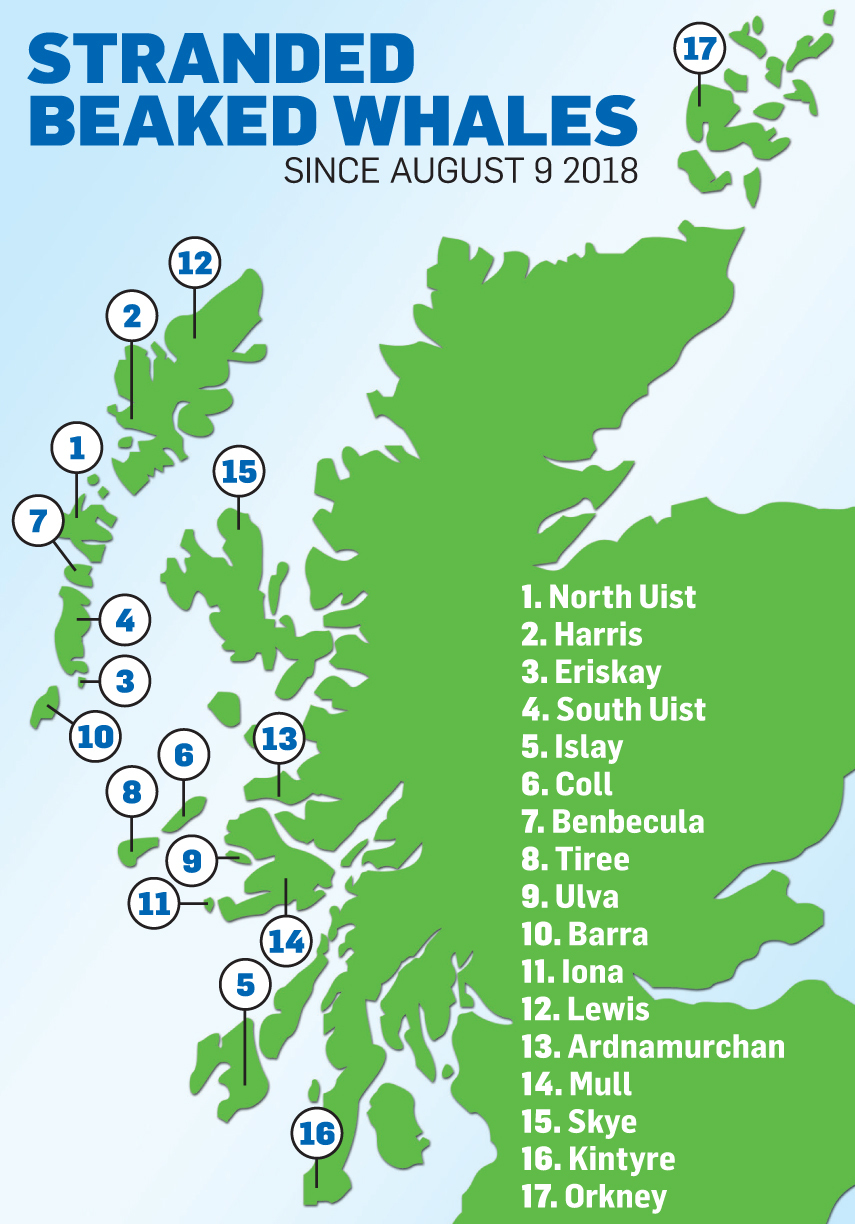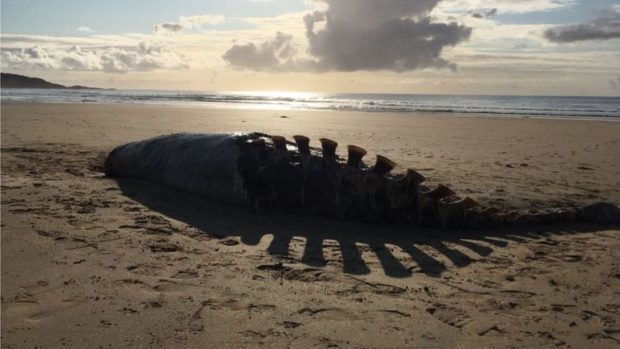Marine researchers have confirmed an “unprecedented” number of beaked whale deaths occurring off the west coast of Scotland.
And they have described it as the “largest mortality event of this species anywhere, ever”.
Between August 9 and yesterday, no less than 81 of the deep sea animals, predominantly Cuvier’s beaked whales, have washed up in various stages of decomposition on beaches and coastlines from Orkney to Kintyre.
Some of the cetaceans have also been discovered on the west coast of Ireland, and Northern Ireland.
The Scottish Marine Animals Stranding Scheme (SMASS) usually records fewer than three deaths of the species a year – but the cause of the 81 deaths since August is a mystery.
The vast majority of the washed-up whales have so far been too decayed for necropsies to positively identify how or why they died, but a number of hypotheses have been put forward.

Cuvier’s beaked whales are some of the deepest-diving mammals on the planet, and rely on sonar and echolocation to navigate the pitch-black depths of the Atlantic sea, more than a mile deep.
As a result, they are highly susceptible to loud underwater sounds such as sonar, which some marine biologists worry could be causing them to surface too quickly in distress.
It’s suspected this could lead to them suffering from decompression sickness – also known as the bends – a condition that can also prove fatal to human divers.
Other potential factors under consideration to explain the remarkable amount of fatalities include pollution and disease.
Nick Davidson, stranding coordinator for the SMASS said: “Our average stranding numbers for these animals is around two and a half per year.
>> Keep up to date with the latest news with The P&J newsletter
“So the number we’ve had over the past month or so is pretty much unprecedented.
“We don’t actually know the cause of the deaths.
“The problem is they’ve always been dead for some time by the time they hit the beach, and the extent of decomposition means there’s a limit to the tests we can do to find out more.
“We know that these animals are particularly sensitive to sound disturbance, and can dive as deep as 3km (1.8 miles) down to hunt for squid, so any loud noise can be a problem.
“If they get disturbed, they could get decompression sickness and die, and depending on tides and currents, they can end up on our beaches.
“But, at this point, we can’t confirm exactly what is causing this large number of deaths, because of the state of the carcasses.”
In addition to Cuvier’s beaked whales, scientists believe they have identified a number of recent carcasses as northern bottlenose whales.
A spokesman for the Ministry of Defence said the navy will do all it can to ensure sonar is not damaging marine life.
He added: “The Royal Navy takes its responsibilities in safeguarding the environment very seriously and, when at all possible, operators take avoidance actions should animals be detected before or during sonar operations.”
Both UK and Scottish governments have ordered investigations into the whale deaths.
Researchers attempting to understand why so many Cuvier’s beaked whales have washed up dead and decomposing on Scotland’s coastlines are faced with an unusual problem – very little is known about the species.First described in 1823 from an imperfect skull found off the Mediterranean coast of France by French anatomist Georges Cuvier, the animal was originally thought to be part of an unknown, extinct species.
However, when the original specimen was compared to another that stranded itself in Herault in 1850, zoologists found the two to be identical and realised the creatures were still present in modern waters.
They can grow up to 20ft long, and can weigh as much as two tonnes.
Although they can be found all over the world, scientists have had few opportunities to observe their behaviour directly.
This is because the marine mammals spend most of their time in the lightless depths more than a mile below the surface feeding on squid and other deep-sea fish.
Nick Davidson, of the Scottish Marine Animals Stranding Scheme, said: “The trouble with this particular species is they’re very cryptic .
“They’re not very well-studied because they live very deep down in the sea, and inhabit parts of the ocean that are far from land.
“As a result, the number of animals that exist and the finer details of their behaviour is little understood, purely because of how hard it is to study them.”
It is thought there could be as many as 100,000 Cuvier’s beaked whales worldwide.
A tagged Cuvier’s beaked whale was once recorded to have reached a record depth of 9,816 feet – the deepest recorded dive by any mammal, and just under the height of eight Empire State Buildings.










